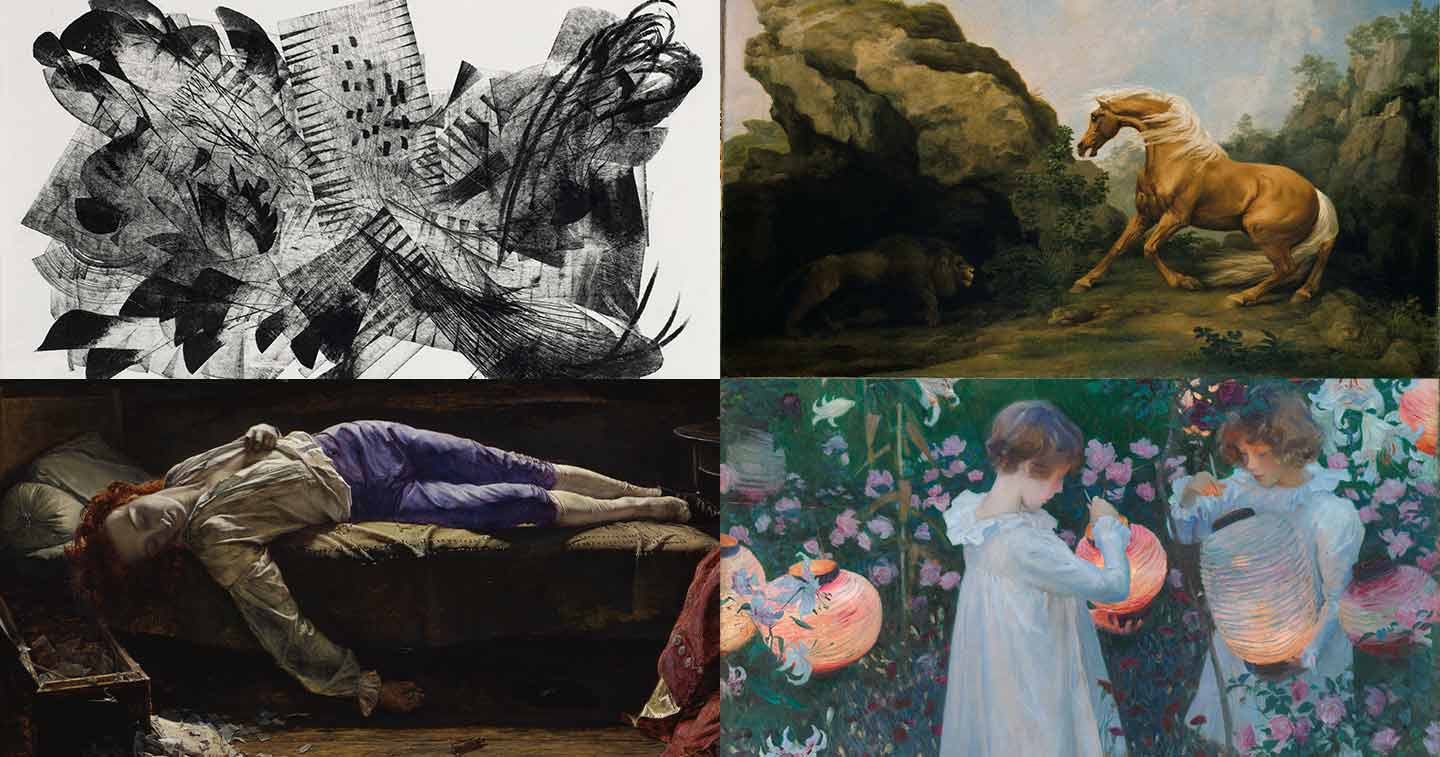LONDON, UK — Sound design and music production studio String and Tins unveiled the second installment in their acclaimed release series, “Stills”, where composers/sound-designers are asked to create a piece of music in response to a self-selected work of art exhibited in London’s Tate Britain gallery.
“Stills 02” presents four renowned composers/sound designers with a premise that poses a question: If each respective artwork represented a still from a scene, what would the score sound like? This year’s composers have created four unique scores for iconic paintings by the likes of illustrious Edwardian portraitist John Singer Sargent, English early Romantic painter George Stubbs, British Pre-Raphaelite painter Henry Wallis, and Hungarian figurative artist Magda Cordell.
Marrying the disciplines of music and fine art, the innovative project continues for a second year as composers Mike Bamford, Adam Smyth, Kaspar Broyd, and Lawrence Kendrick create four orchestral compositions and imagine new worlds for the historic artworks. Selected by the composers, each dramatic neo-classical arrangement perfectly encapsulates the mood of their chosen artwork through a contemporary cinematic arrangement.
With visions of en-plein-air impressionism, 18th-century lyricism, lavish romanticism, and brutalist materiality, the selected artworks are interpreted with a vivid sense of individuality from each composer. The first composition on the EP, composed by award-winning sound designer, composer, and co-founder of String and Tins, Mike Bamford, beautifully reflects the childhood magic and inquisitiveness captured by artist John Singer Sargent in his painting, “Carnation, Lily, Lily, Rose” (1885-6).
Mike Bamford, founder, and composer at String and Tins commented, “I absolutely love the childhood magic that John Singer Sargent’s Carnation, Lily, Lily, Rose captures. The music begins with the sounds of a garden at twilight. Field recordings I made of cicadas in France were tuned with thick layers of flute, cello, and other harmonic drones to set the scene. Next the girls are handed their delicate lanterns. They hold them with care, as they could rip or catch fire. A simple piano motif scores their guarded inquisitiveness.
As the girls gain confidence, swapping lanterns and moving around the garden, a solo cello, performed by Leo Popplewell, picks up the melody. The music continues to build as the girls’ imagination goes into overdrive. Notes swirl around as they dance through the garden, lifting their lanterns above their heads. As we reach a crescendo, soaring strings take over and the lanterns lift off into the night sky. The girls stand completely still, in wonderment at the rising lights. As the lights fade into the distance, the twilight sounds and piano return to bring us back to reality and the girls find themselves standing alone once more in the garden.”
String and Tins’ composer Adam Smyth selected the tense ‘Horse Frightened by a Lion’ (exhibited 1763) by George Stubbs, achieving an “oxymoronic” type of arrangement by using certain bowing and harmonic techniques to draw on a paradoxical moment of calm uncertainty.
Adam Smyth, creative director, sound designer, and composer at String and Tins added, “When I looked at Stubb’s painting, I imagined how it feels to be startled and pumped full of adrenaline. How easy it is to become dead aware of your surroundings, forcing you to fight to survive? I was also struck by the way Stubb’s depicts nature’s elegance yet cruelty and uncanny ability to be majestic yet brutal at the same time.
I wanted the music to reflect this. There’s a real build in tension between these two incredible animals. Using certain bowing and harmonic techniques to really draw on a paradoxical moment of calm uncertainty. Then, with the introduction of brass, the piece explodes into its own epic crescendo and battle. My goal was to try and achieve an “oxymoronic” type of arrangement; something slow yet fast, sad but still a little upbeat. A story of several acts.”
Attempting to reflect on the melancholic subject matter of his chosen artwork, accomplished composer Kasper Broyd pulls on heartstrings with his interpretation of the deeply emotive painting ‘Chatterton’ by Henry Wallis (1856).
Kasper Broyd, composer, added, “The subject of the painting is the 17- year-old English early Romantic poet Thomas Chatterton, shown dead after he poisoned himself with arsenic in 1770. The composition attempts to reflect the melancholy and hubris of Chatterton in equal measure with the tentative fanfare of horns echoing from the artist’s garret over the streets and alleys of London. The theme is taken up by the strings as the piece journeys through the late poet’s artistic fervor followed in turn by self-doubt, anguish, and taking of his own life. My hope is that there are emotional triggers in there for everyone who has been touched by either the mindset or the fall-out of the subject matter.”
Lawrence Kendrick, composer, added, “I’ve always been fascinated with space, scale, life, and the relativity of significance in our lives. I’ve had my share of existential crises in my life and this painting plays with those concepts and emotions. Cordell’s representation of woman as both embryo and life-giver, while also having an unknowing sense of scale that could be anywhere from the microscopic to the galactic really resonated with me.
Life, birth, regeneration, and scale are the concepts I aimed to explore in this music while maintaining a sense of loneliness that comes with being a single soul in an infinite Universe.
This piece progresses from the intimate, drawing on the beauty and loneliness of birth and life on a personal scale, and joining that life on its journey while exploring its cyclical nature and taking it to its inevitable conclusion.”
‘Stills 02’ is out on May 27, 2022 via String and Tins Recordings, available to stream & download on Spotify, Apple Music, and Amazon.














